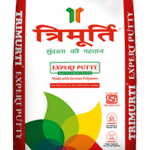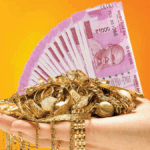
Bid Writer
Every winning bid tells a story of strategy, precision, and determination that a bid writer has successfully executed. While the final announcement grabs the headlines, the real magic happens long before the decision is made. Behind the scenes, there’s a whirlwind of research, collaboration, and meticulous planning that transforms a proposal into a winning contender.
You might think it’s all about the numbers, but crafting a successful bid is as much an art as it is a science. It’s about understanding your audience, anticipating their needs, and delivering a solution that stands out. The process is intense, competitive, and often filled with unexpected twists that test even the most seasoned professionals.
So, what does it really take to secure that winning edge? By peeling back the curtain, you’ll discover the hidden elements that drive success and learn how every detail plays a part in turning ambition into achievement.
Understanding The Bidding Process
The bidding process involves structured, overlapping phases where precision is paramount. Your ability to analyse, adapt, and deliver determines how impactful your submission is.
Key Elements Of A Winning Bid
Winning bids balance accurate data and tailored narratives. Your proposal should reflect deep audience insight, showing how your solutions align with their specific goals. Address evaluation criteria clearly, formatting your response to reflect the requirements. Thoughtful presentation of credentials and evidence supports your authority in delivering value. Use examples to highlight past successes or capabilities that match the client’s priorities.
Common Challenges Faced By Bidders
Bidders frequently encounter tight deadlines, limited resources, or unclear specifications. You might figure out conflicting internal priorities while striving to maintain quality. Incomplete briefs can lead to guesswork, risking misaligned solutions. Managing competitive pressure requires balancing differentiation with adherence to the client’s guidelines. Miscommunication or missing links within your team’s collaboration may compromise the bid. Anticipating and mitigating such obstacles keeps your process streamlined.
Preparation Strategies
Winning bids stem from careful preparation. Every detail can shift outcomes, so strategies play a pivotal role in achieving success.
Research And Analysis
Understanding your audience drives effective bids, yet this requires layered research. Dive into their goals, evaluate market conditions, and analyse competitors’ strengths. Explore data sources, uncover trends, and assess their implications for your proposal. Look beyond surface needs, identifying potential gaps or challenges they might not articulate. Build insights into narratives that resonate, linking the audience’s objectives with solutions. A dedicated research phase shapes aligned and competitive offers.
Building A Strong Team
Recruit expertise that complements your bid objectives. Identify those with sector knowledge, technical skills, and creative thinking. Blend diverse strengths to cover strategy, content, and execution seamlessly. Encourage collaboration to harness fresh perspectives. Assign clear roles, ensuring accountability while avoiding duplicated effort. Build trust among team members, as effective synergy boosts efficiency and innovation. By pooling specialised talent, you increase your bid’s impact and credibility.
Creating A Comprehensive Plan
Map every stage of the bid timeline, factoring in constraints like deadlines or limited resources. Prioritise key tasks, dividing them into manageable steps. Allocate resources efficiently, ensuring nothing stretches the team too far. Include checkpoints to review progress and address potential risks. Structure your plan around the client’s evaluation criteria to maintain alignment. Seamless planning reduces errors, improves submissions, and enhances overall performance.
Crafting The Proposal
A winning proposal blends strategy, precision, and insight. Each element should work in harmony to deliver value and respond to your client’s expectations.
Being A Bid Writer
Bid writing combines technical knowledge with persuasive communication. You analyse client requirements, ensuring each criterion is addressed with clarity that scores high marks. Structure your responses strategically, providing evidence for every claim. You might refine phrasing repeatedly to balance impact and professionalism. No detail is too small when your words convey your organisation’s capability. Think about how each section flows into the next to maintain a compelling narrative.
Importance Of Tailored Solutions
Generic responses rarely lead to success. Tailor each proposal to reflect your client’s specific goals. Analyse tender documents, identifying where customisation brings value. Show how your approach aligns with their operational needs or strategic objectives. When crafting your solution, reference their stated and implied priorities. This customisation might require flexibility in your processes but raises trust and demonstrates partnership potential. Personalisation sets your bid apart as thoughtful and informed.
Highlighting Unique Selling Points
You need to make your offering stand out by presenting unique benefits competitors cannot match. Focus on specific differentiators in your methodologies, technologies, or expertise. Use examples to link innovations directly to client advantages like speed, cost reduction, or enhanced outcomes. It can help to reference past successes but adapt the narrative to align with the client’s priorities. Reinforce your authority by showing why these elements are credible and relevant for their context.
Addressing Client Needs Effectively
Your client cares about solutions, not generic outputs. Address their core problems with precision. Highlight your understanding of their sector, supported by research and credible analysis. Each section of the proposal should connect directly to how you meet their needs fully. Use statistics or qualitative data to validate your insights. When explaining benefits, focus on outcomes meaningful from their perspective rather than your internal achievements. A client-centred approach enhances confidence in your proposal.
The Presentation Stage
This phase brings your bid into the spotlight, where your team’s preparation, strategy, and confidence determine the outcome. Your delivery can strongly influence stakeholders and shape the perception of your proposal.
Strategies To Win Over Stakeholders
Engaging stakeholders demands clarity and confidence. Your presentation should address their priorities directly, weaving your proposal’s strengths into their goals. Highlight achievements using evidence like case studies to back claims. Structure your points logically, leading them through your reasoning effortlessly.
Stakeholders appreciate customisation; tailoring your message to resonate with their vision sets you apart. Maintain steady eye contact if presenting in person, or ensure clarity and energy if virtual. Speak with precision when demonstrating value rather than relying on jargon.
Handling Questions And Concerns
Questions signal interest, meaning you should prepare responses that reassure stakeholders effectively. Anticipate potential concerns and rehearse answers that tie back to your proposal’s benefits. Address weaknesses openly but pivot to your strengths.
Active listening is key. Note each question carefully and respond with calm and clarity, avoiding overloading them with excessive details. If pressed for specifics, rely on well-presented data or metrics to provide satisfying, succinct answers.
Post-Bid Activities
Submitting the bid doesn’t mark the end of the journey. Instead, it offers a chance to grow, refine strategies, and build stronger processes for future success.
Learning From Feedback
Feedback reflects how your bid engaged the evaluators. It might uncover areas for improvement or reveal strengths you can amplify. Explore every comment, even minor ones, as they often highlight overlooked details. Did the evaluators find your responses clear, or were there gaps in your evidence? Determine where missteps happened if feedback focuses on unclear explanations or unaddressed criteria. Use these insights to refine your approach, prioritise precision, and align closer with client priorities in future proposals.
Strengthening Future Bidding Processes
Strengthening your bidding processes hinges on insights from past bids. Start by assessing workflows—did your planning allow enough time to craft a persuasive proposal? Identify bottlenecks slowing collaboration or resource allocation. Could you optimise tasks through better-defined roles or tools? Draw lessons from team performance, especially when tight deadlines stressed efficiency. These adjustments turn challenges into opportunities, enabling your team to produce bids that resonate and differentiate in increasingly competitive landscapes.
In Closing
A winning bid is never just a product of chance; it’s the result of deliberate effort, strategic thinking, and seamless collaboration. Every detail, from understanding the audience to refining your proposal and presentation, plays a critical role in setting you apart.
By embracing challenges, leveraging feedback, and continuously refining your approach, you’re not only enhancing your chances of success but also building a stronger foundation for future opportunities. Each bid is a chance to grow, innovate, and demonstrate your value with clarity and confidence.





